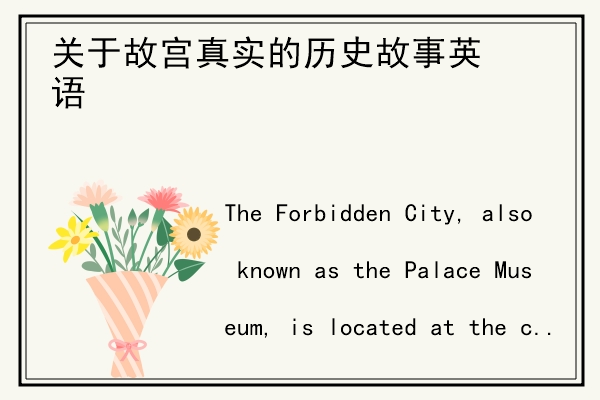关于故宫真实的历史故事英语

The Forbidden City, also known as the Palace Museum, is located at the center of Beijing's central axis. It was the imperial palace of 24 emperors during the Ming and Qing dynasties, covering an area of 720,000 square meters with a building area of approximately 150,000 square meters. Construction began in 1406 during the fourth year of the Yongle Emperor's reign and was completed in 1420 during the 18th year of his reign.
The Forbidden City was originally called the Purple Palace and was built on the basis of the Daming Palace of the Yuan Dynasty. The chief designer was a carpenter named Kuai Xiang. Its name comes from the Purple Star, which was believed to be at the center of the heavens by ancient peoples. The palace is located in the center of Beijing, the political center of the country, and was thus named the Forbidden City. In 1416, the Ming Emperor Zhu Di ordered the construction of the palace based on the design of the Nanjing Palace.
During its 500 years of history, 24 emperors of the Ming and Qing dynasties lived in the Forbidden City. There were over 1,630 temples during the Ming dynasty and over 1,800 during the Qing dynasty, of which approximately 2,631 still exist today.
This brief article provides a glimpse into the fascinating history of the Forbidden City. If you want to learn more, don't hesitate to visit this magnificent palace and immerse yourself in the rich culture and history of China.
上一篇:买卖怎么区分买东西给别人
下一篇:一个鹅蛋的热量是多少千卡的
